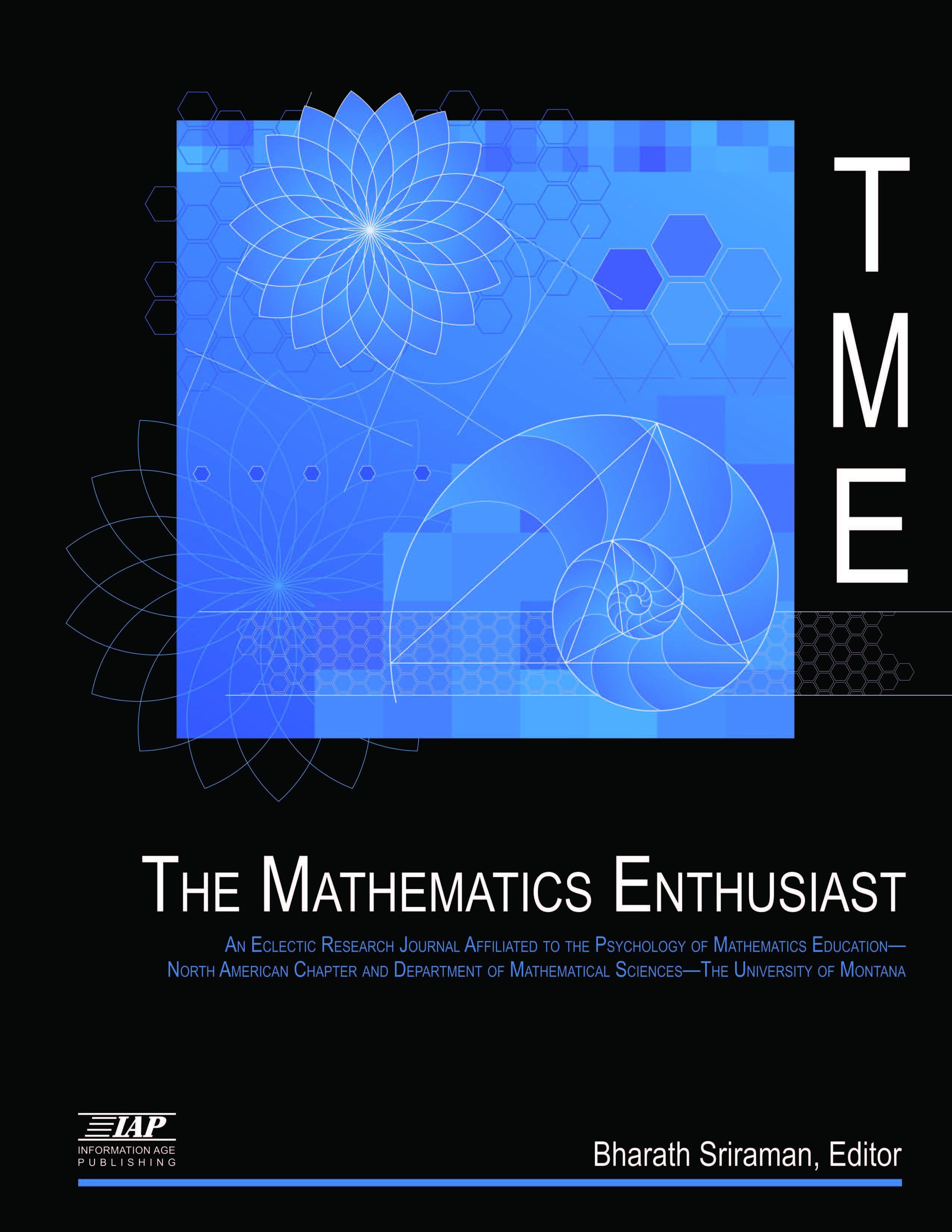
Volume
9
Issue
3
Abstract
From looking at research literature it is possible to see that research on design, implementation and analysis of mathematical tasks is an actual theme: there is a special issue of the Journal of Mathematics Teacher Education (2007) with Anne Watson, John Mason and Orit Zaslavsky as editors (Watson and Mason, 2007), a book published by Clarke, Grevholm and Millman (2009) concerning “Tasks in primary mathematics teacher education” and under ICME 11 in Mexico (2008) the title of one of the Topic Study Groups was “Research and development in task design and analysis”. In addition several substantial research projects conducted in the United States focus on this issue. For example the QUASAR project (Quantitative Understanding: Amplifying Student Achievement and Reasoning), involving a group of researchers (Stein, Smith, Henningsen & Silver, 2000), aimed at improving mathematics instruction for students by emphasising thinking, reasoning, problem solving and the communication of mathematical ideas. One of the central aspects of their research was to focus on the use of instructional tasks in project classroom and they proposed the elaboration of “the mathematical tasks framework” where the kinds of thinking needed to solve tasks were referred to as “cognitive demands”. They reported on observations concerning the change of cognitive demands during a lesson where “a task that starts out challenging … might not induce the high-level thinking and reasoning that was intended as the students actually go about working on it” (Stein et al., 2009, p.xviii). This aspect is also address by Artigue (1994) arguing that it might be tempting to implement too quickly development products arising from research into products for teaching. She characterises the processes related to the transmission of products from didactic engineering in terms of distortions and she emphasises the distinction between the activities of conducting research and of engaging in teaching. My aim, in this article, is to follow Artigue’s argumentation and to investigate, trace and characterise the distortions of a specific mathematical task (the T-shirt task) from its design by a group of didacticians at University of Adger (UiA) to its implementation by two different teachers. This research is situated in a larger research project conducted at (UiA), the Teaching Better Mathematics project (TBM).
First Page
347
Last Page
358
Recommended Citation
Berg, Claire Vaugelade
(2012)
"From designing to implementing mathematical tasks: investigating the changes in the nature of the T-shirt task,"
The Mathematics Enthusiast: Vol. 9
:
No.
3
, Article 6.
DOI: https://doi.org/10.54870/1551-3440.1249
Available at:
https://scholarworks.umt.edu/tme/vol9/iss3/6
Digital Object Identifier (DOI)
10.54870/1551-3440.1249
